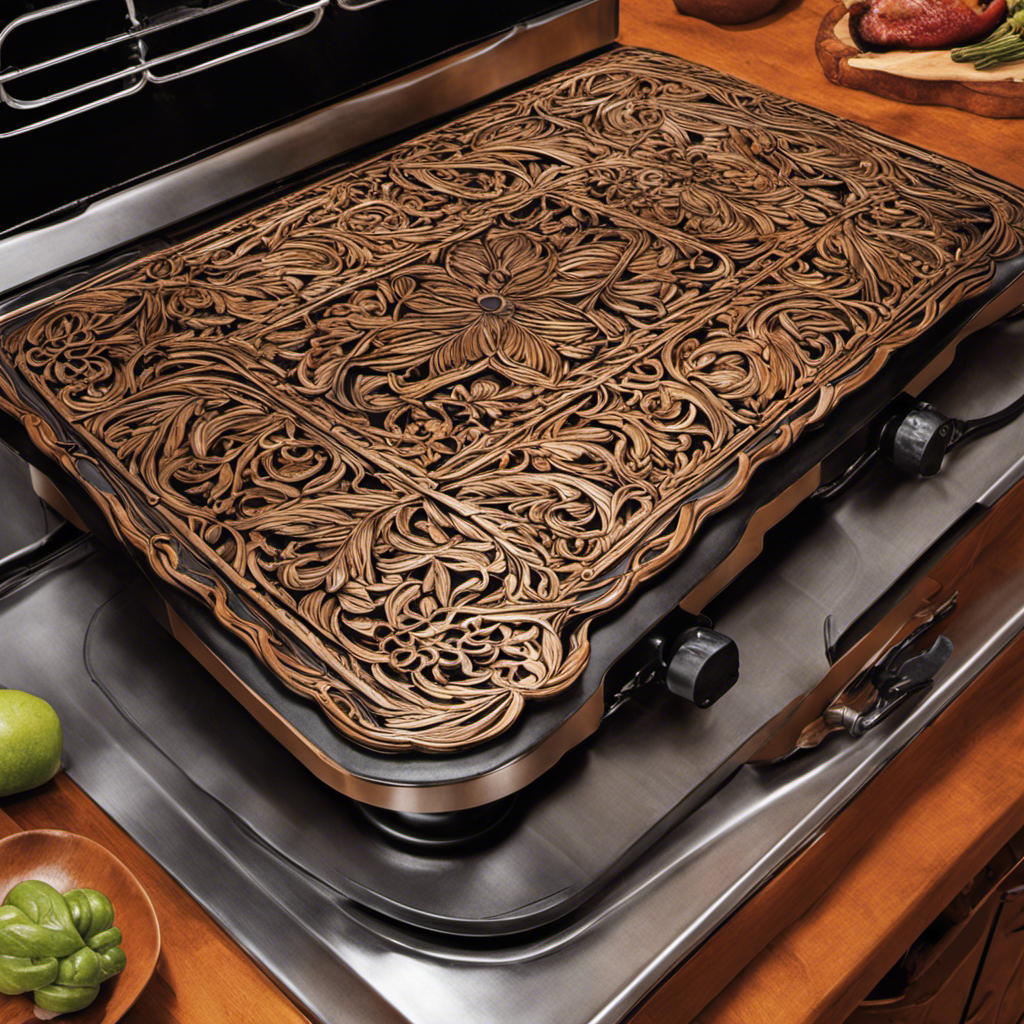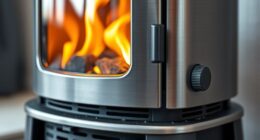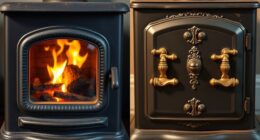As a homeowner, I have always appreciated the warmth and comfort provided by my wood stove. However, I have recently been wondering: how can I determine if it is emitting carbon monoxide?
It’s a valid concern, considering the dangers of this odorless, colorless gas.
In this article, I’ll share the signs to look out for and provide tips on testing for carbon monoxide in your home.
Let’s ensure our wood stoves keep us warm and safe.
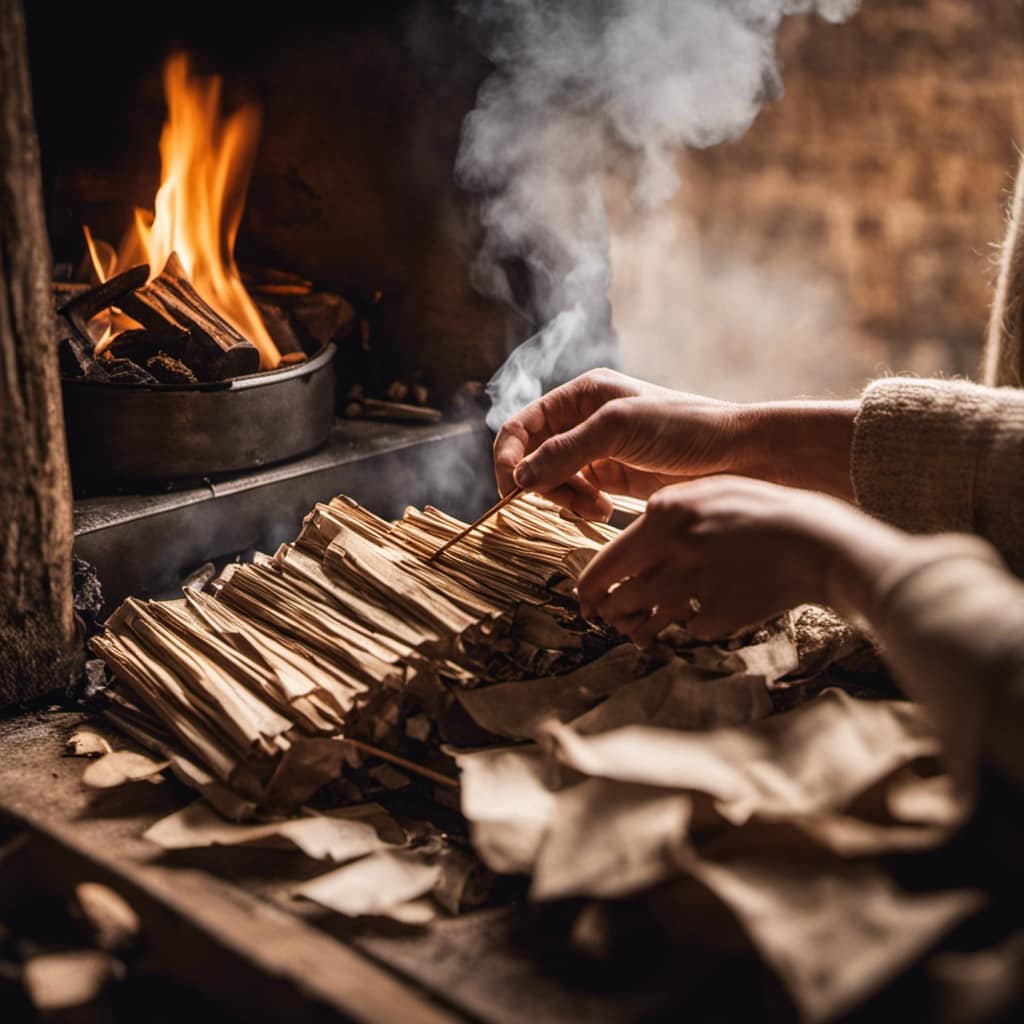
Key Takeaways
- Carbon monoxide is a colorless, odorless gas that can be lethal in high concentrations.
- Symptoms of carbon monoxide poisoning include headaches, dizziness, and nausea, which can be mistaken for other illnesses.
- Signs of carbon monoxide emission from a wood stove include frequent headaches while in use, feeling lightheaded or nauseous near the stove, excessive soot or black residue, and a yellow or flickering flame.
- To prevent carbon monoxide exposure from a wood stove, ensure proper ventilation, install carbon monoxide detectors, regularly clean and maintain the stove, and have it professionally inspected and serviced annually.
Understanding the Dangers of Carbon Monoxide
I need to be aware of the potential dangers of carbon monoxide in order to protect myself and my family.
Carbon monoxide is a colorless, odorless gas that can be lethal in high concentrations. It’s produced by the incomplete combustion of fuels such as gas, oil, and wood.
Breathing in carbon monoxide can have serious effects on our health, including headaches, dizziness, nausea, and even death. That’s why it’s crucial to have carbon monoxide detectors installed in our homes.
These detectors are designed to sound an alarm when they detect high levels of carbon monoxide in the air. They provide an early warning, allowing us to evacuate and seek medical help if necessary.
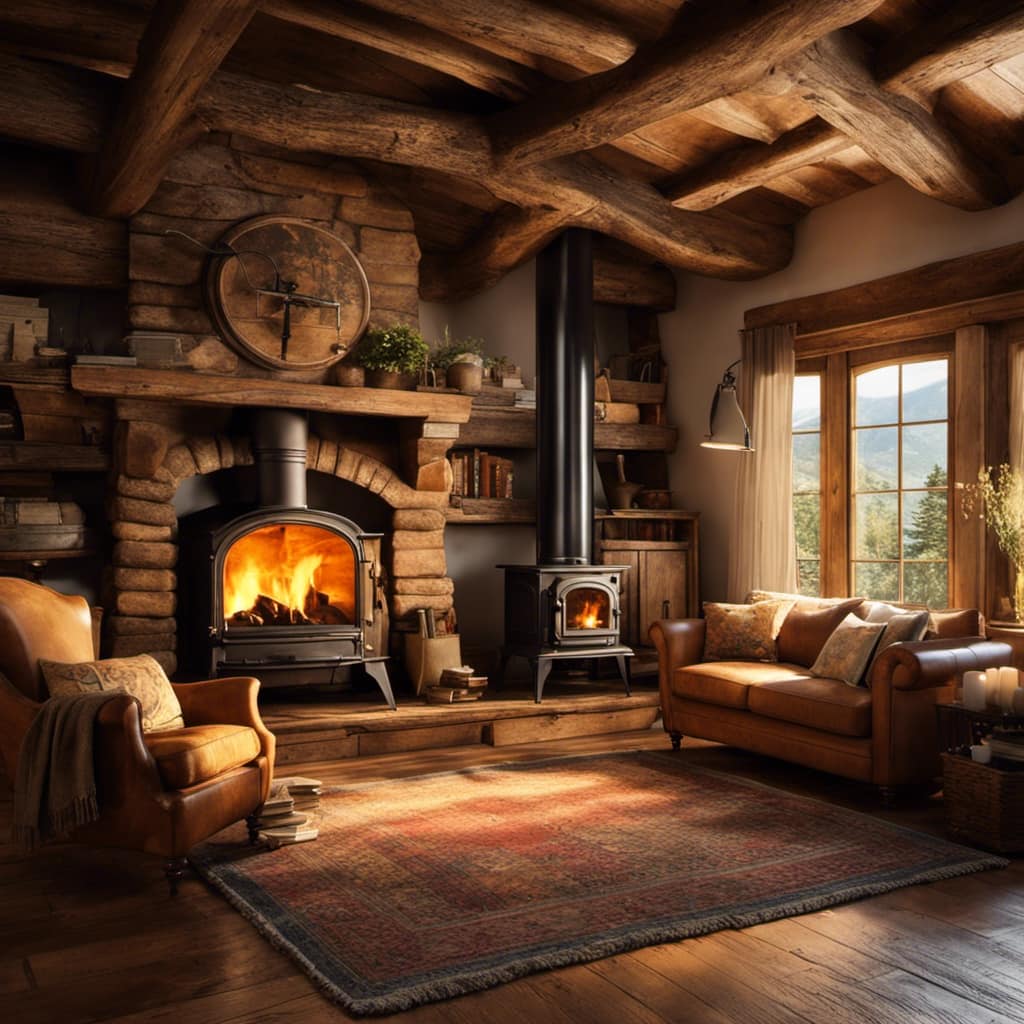
Regularly checking and maintaining these detectors is essential to ensure they’re functioning properly and keeping our loved ones safe.
Recognizing the Symptoms of Carbon Monoxide Poisoning
Although carbon monoxide is odorless and colorless, it’s important to recognize the symptoms of carbon monoxide poisoning, such as headaches, dizziness, and nausea, to ensure our safety.
Recognizing the early symptoms of carbon monoxide poisoning is crucial because it allows us to take immediate action and prevent further exposure. Headaches, which are one of the most common symptoms, can range from mild to severe. Dizziness and nausea may also accompany the headaches. It’s important to note that these symptoms may vary from person to person and may be mistaken for other illnesses.
Long-term effects of carbon monoxide poisoning can be serious and even life-threatening. Prolonged exposure can lead to neurological damage, cognitive impairments, and even death. Therefore, it’s essential to be aware of the early symptoms and seek medical attention if carbon monoxide poisoning is suspected.
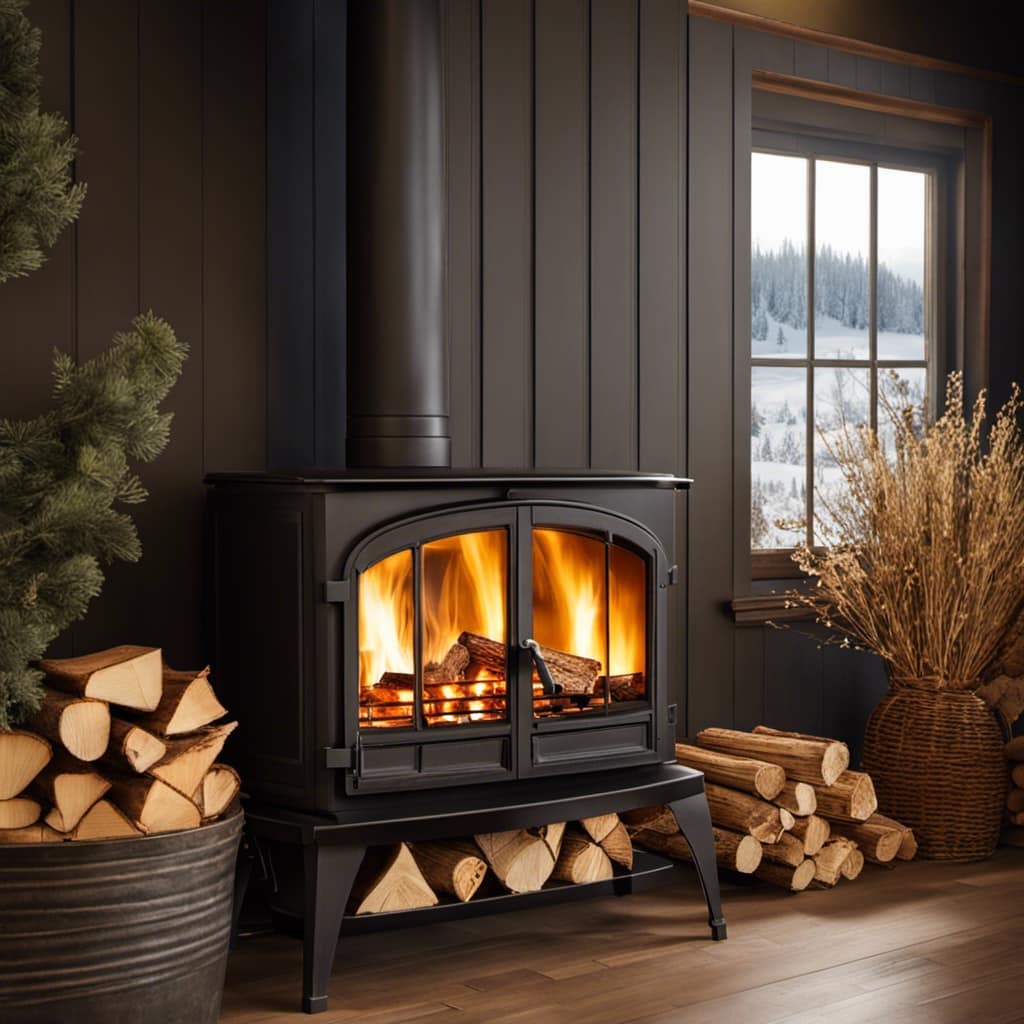
Signs That Your Wood Stove May Be Emitting Carbon Monoxide
One sign that your wood stove may be emitting carbon monoxide is if you experience multiple headaches while it’s in use. Carbon monoxide is a silent, odorless, and potentially deadly gas, making it crucial to be aware of its presence. Here are some indicators that your wood stove may be producing carbon monoxide:
- Headaches: Frequent headaches while the wood stove is in use can be a symptom of carbon monoxide exposure.
- Dizziness and nausea: Feeling lightheaded or nauseous when near the wood stove may indicate the presence of carbon monoxide.
- Soot buildup: Excessive soot or black residue around the wood stove can suggest incomplete combustion and the production of carbon monoxide.
- Yellow or flickering flame: A wood stove flame that isn’t consistently blue may indicate an issue with ventilation, potentially leading to carbon monoxide release.
To prevent carbon monoxide poisoning, it’s essential to have carbon monoxide detectors installed in your home and ensure proper ventilation when using a wood stove. Regular maintenance and inspections are also crucial to identify any potential issues and ensure safe operation.
Testing for Carbon Monoxide in Your Home
My carbon monoxide detector’s alarm went off, so I quickly opened the windows and doors to ventilate my home.
Carbon monoxide detectors are essential for detecting this odorless and colorless gas, which can be deadly if not detected early.
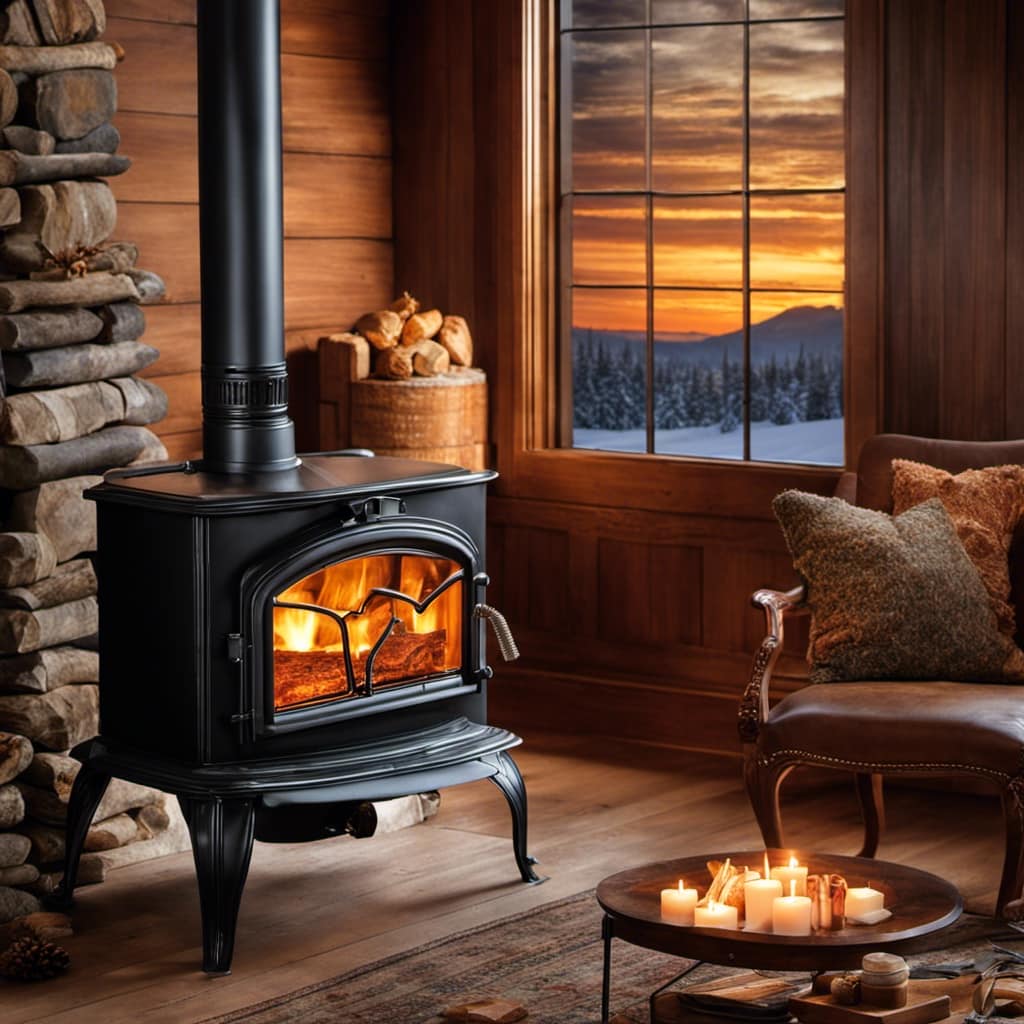
If your carbon monoxide detector goes off, it’s important to take immediate action to ensure your safety.
Ventilating your home by opening windows and doors is a crucial first step.
However, it’s also important to have a professional inspection of your home’s heating system, including your wood stove, to identify any potential sources of carbon monoxide.
A professional inspection can help detect any leaks or malfunctions that may be contributing to the carbon monoxide exposure in your home.

Taking these preventative measures can help ensure the safety of you and your family.
Preventing Carbon Monoxide Exposure From Your Wood Stove
I learned five important steps to prevent carbon monoxide exposure from my wood stove.
- Ensure proper ventilation by opening windows or using a vent system.
- Install carbon monoxide detectors near the wood stove and throughout the house.
- Regularly clean and maintain the wood stove to prevent blockages or leaks.
- Have a professional inspect and service the wood stove annually.
Carbon monoxide safety is crucial when using a wood stove. By following these steps, you can minimize the risk of carbon monoxide poisoning.
Proper ventilation is essential to allow fresh air to circulate and prevent the buildup of carbon monoxide. Installing carbon monoxide detectors provides an early warning system in case of a leak. Regular cleaning and maintenance of the wood stove help prevent blockages in the vents or cracks that can lead to carbon monoxide leakage. Lastly, scheduling annual inspections by a professional ensures that the wood stove is in good working condition and any potential issues are addressed promptly.
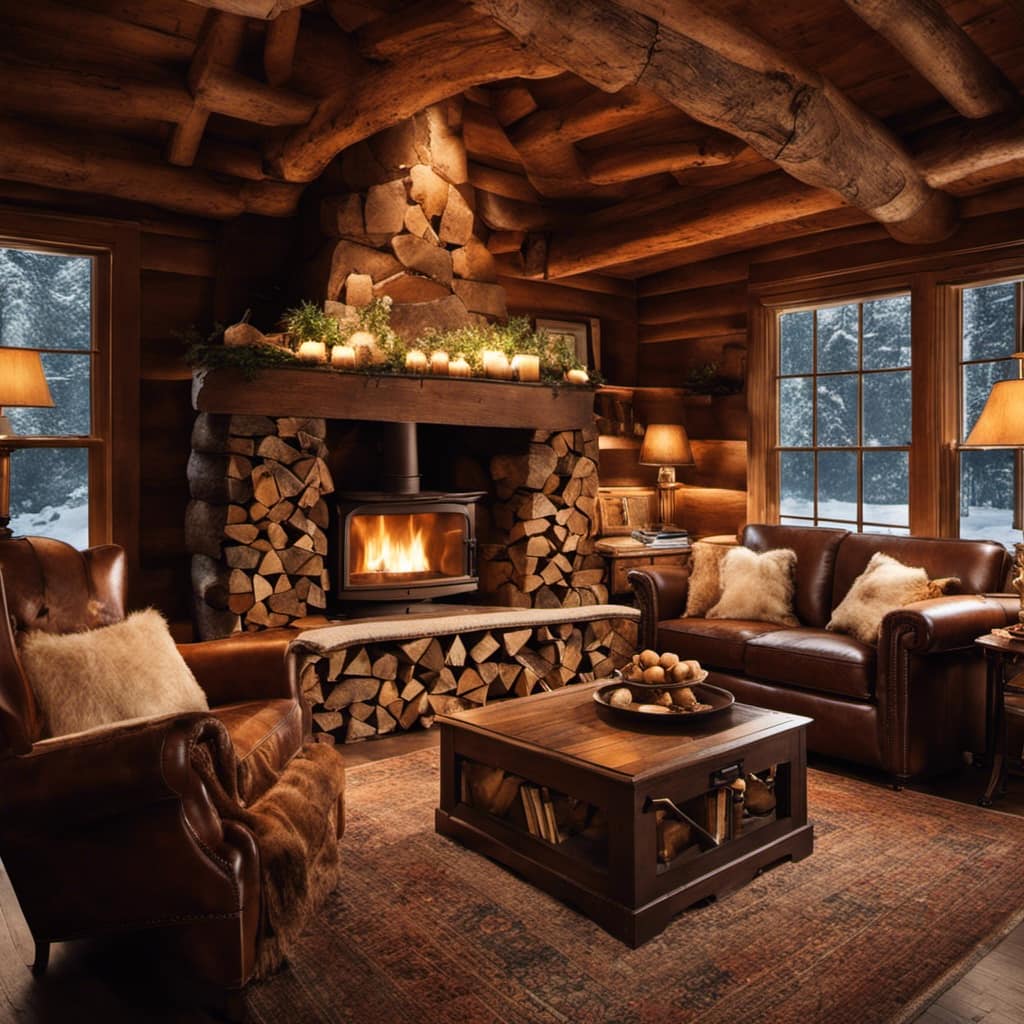
Can Secondary Burn in a Wood Stove Affect Carbon Monoxide Levels?
Yes, secondary burn wood stove can significantly affect carbon monoxide levels. When properly utilized, secondary burn technology can help reduce harmful emissions by reigniting the smoke and gases that would otherwise escape into the atmosphere, ultimately resulting in lower carbon monoxide levels.
Frequently Asked Questions
What Actions Should I Take if I Suspect My Wood Stove Is Emitting Carbon Monoxide?
If I suspect my wood stove is emitting carbon monoxide, I would first ensure my safety by leaving the area. Then, I would open windows for ventilation and call a professional to inspect the stove. It’s important to be aware of carbon monoxide poisoning symptoms and have carbon monoxide detectors installed.
Can Carbon Monoxide Detectors Be Used as a Reliable Method to Test for Carbon Monoxide in My Home?
Yes, carbon monoxide detectors can be reliable for testing carbon monoxide in your home. However, it’s important to note that alternative methods, such as visual inspections and professional inspections, should also be considered for comprehensive safety measures.
Is It Possible for a Wood Stove to Emit Carbon Monoxide Even if It Appears to Be Functioning Properly?
Yes, it is possible for a wood stove to emit carbon monoxide even if it seems to be working fine. Regular wood stove maintenance and awareness of signs of carbon monoxide exposure are crucial for safety.
Are There Any Specific Maintenance Tasks I Should Perform Regularly to Prevent Carbon Monoxide Emissions From My Wood Stove?
To prevent carbon monoxide emissions from my wood stove, I perform regular maintenance tasks. This ensures the stove functions properly and reduces the risk of carbon monoxide leaks.
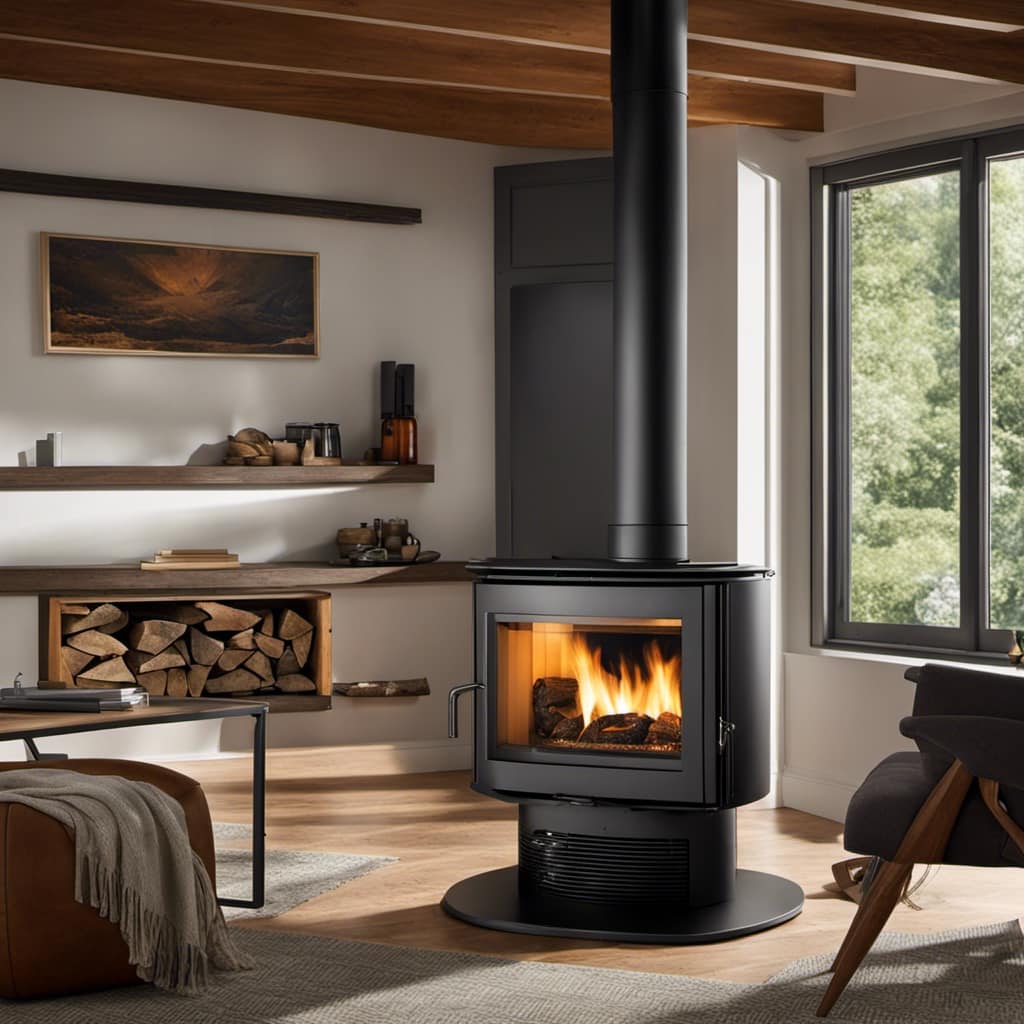
How Can I Ensure the Proper Ventilation and Airflow in My Home to Minimize the Risk of Carbon Monoxide Poisoning From My Wood Stove?
To minimize the risk of carbon monoxide poisoning from my wood stove, I ensure proper ventilation and airflow in my home. Regularly checking for leaks and maintaining a clear pathway for the exhaust ensures safety.
Conclusion
In conclusion, it’s crucial to be aware of the potential dangers of carbon monoxide when using a wood stove. Recognizing the symptoms of carbon monoxide poisoning and being vigilant for signs that your wood stove may be emitting this gas can help protect you and your family.
Regularly testing for carbon monoxide in your home and implementing preventative measures, such as proper ventilation and maintenance of your wood stove, are essential to ensure a safe living environment. For example, a recent case study showed that a family was saved from carbon monoxide poisoning due to their diligence in testing and maintenance.
Growing up surrounded by the vast beauty of nature, Sierra was always drawn to the call of the wild. While others sought the comfort of the familiar, she ventured out, embracing the unpredictable and finding stories in the heartbeat of nature.
At the epicenter of every remarkable venture lies a dynamic team—a fusion of diverse talents, visions, and passions. The essence of Best Small Wood Stoves is crafted and refined by such a trio: Sierra, Logan, and Terra. Their collective expertise has transformed the platform into a leading authority on small wood stoves, radiating warmth and knowledge in equal measure.






